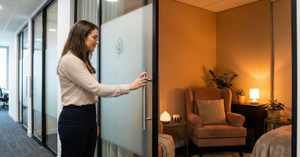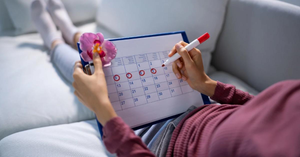Many women experience lower back pain during their menstrual cycle. The pain often feels like a dull ache radiating from the lower abdomen into the back or hips. For some, it is mild and manageable, while for others it can interfere with daily activities. While medications like non-steroidal anti-inflammatory drugs (NSAIDs) are effective, many women seek natural, non-invasive strategies for relief. One of the simplest and most reliable methods is stretching.
Stretching not only eases muscular tension but also improves blood flow, flexibility, and relaxation, making it an important tool for managing cycle-related back pain. As physiotherapy literature in PubMed confirms, targeted stretching routines can reduce menstrual discomfort by addressing both muscular and nervous system responses.
Menstrual back pain is usually caused by prostaglandins, chemicals released during menstruation that trigger uterine contractions. These contractions can radiate pain to the lower back and pelvis. Additionally, hormonal changes may lead to water retention and muscle stiffness, contributing to discomfort.
The NHS explains that the uterus shares nerve pathways with the lower back, which is why period cramps often extend to this region. Prolonged sitting or inactivity during menstruation can worsen tightness in the muscles of the back, hips, and thighs, amplifying pain.
When stretching during your cycle, the goal is gentle movement without forcing the body. Stretches should feel soothing, not painful. Each stretch can be held for 20–30 seconds and repeated 2–3 times.
While stretching is generally safe, it’s important to respect your body’s limits:
Most menstrual back pain is temporary and improves with self-care. However, a professional evaluation is needed if:
In such cases, further tests may be needed to rule out conditions like endometriosis, fibroids, or musculoskeletal disorders.
Menstrual back pain is a common but manageable experience. Stretching provides a safe, natural, and effective way to relieve discomfort by reducing muscle tension, improving circulation, and supporting relaxation. Simple movements such as child’s pose, cat-cow, and spinal twists can be incorporated into daily routines to ease discomfort during your cycle.
Combined with heat therapy, hydration, and mindful rest, stretching offers a holistic approach to managing period-related back pain. If pain becomes severe or persistent, consulting a healthcare professional ensures appropriate diagnosis and treatment.
By treating your body with gentle movement and care, you can transform painful cycle days into more manageable and balanced experiences.
About PeriodSakhi
PeriodSakhi is your trusted companion for understanding your menstrual health. With easy-to-use tools, it helps you track your periods, ovulation, fertility, moods, and symptoms, while providing insights into your overall reproductive and hormonal health. PeriodSakhi also serves as a supportive online community where women can share experiences, find reliable information, and access expert-backed guidance on menstrual health, PCOS, pregnancy, lifestyle, and more.
Disclaimer
The views, thoughts, and opinions expressed in this article/blog are solely those of the author and do not necessarily reflect the views of PeriodSakhi. Any omissions, errors, or inaccuracies are the responsibility of the author. PeriodSakhi assumes no liability or responsibility for any content presented. Always consult a qualified medical professional for specific advice related to menstrual health, fertility, pregnancy, or related conditions.
Start the conversation
No comments yet. Start the conversation by leaving the first comment!





